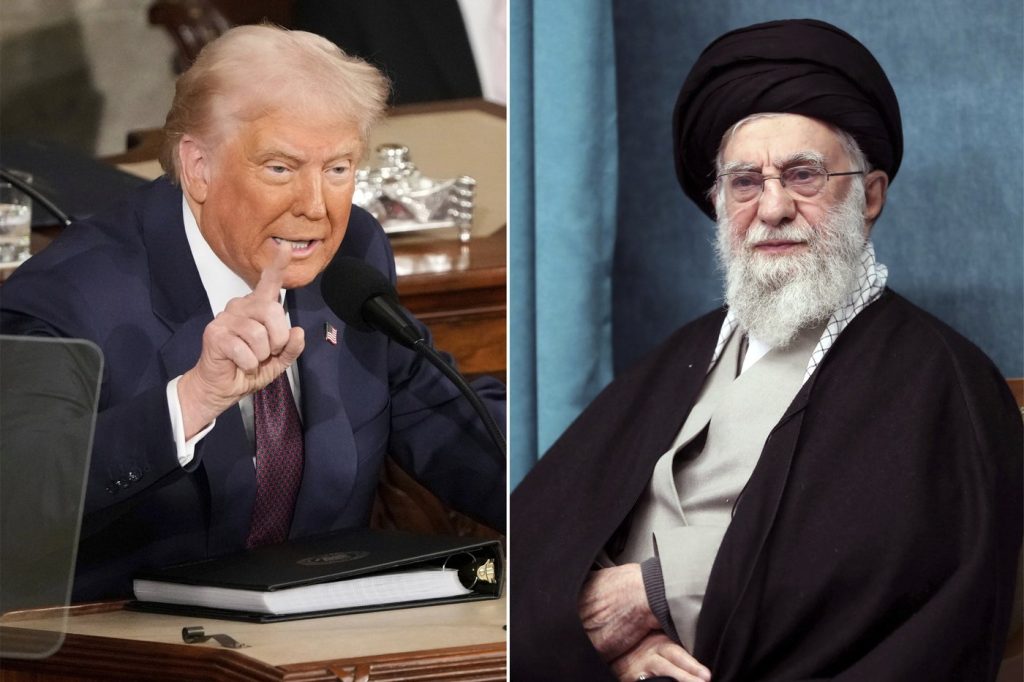DUBAI, United Arab Emirates (AP) – Iran and the United States are set to convene for a second round of negotiations regarding Tehran's nuclear program this Saturday in Rome. This follows an initial round of talks that occurred in Muscat, Oman, where representatives from both sides engaged in face-to-face discussions.
The background of these negotiations is steeped in the "maximum pressure" campaign implemented by former President Donald Trump, who has reinstated sanctions on Iran while hinting at the potential for military action against the country. He has expressed a desire for a new deal and even sent a letter to Iran's Supreme Leader Ayatollah Ali Khamenei, suggesting that military intervention would be catastrophic if negotiations fail.
Khamenei has responded to these threats with warnings that Iran would retaliate against any attack. This letter-writing approach reflects Trump's previous unconventional methods in diplomacy, evidenced by his correspondence with North Korean leader Kim Jong Un, which led to historic meetings, though no comprehensive deals were reached.
The first round of discussions in Oman involved Iranian Foreign Minister Abbas Araghchi and U.S. Mideast envoy Steve Witkoff, who agreed to continue talks after their initial meeting. Witkoff hinted at a possible point of agreement over uranium enrichment levels, specifically the 3.67% threshold established by the 2015 nuclear deal, which the U.S. exited under Trump's administration.
Witkoff emphasized, however, that any deal concerning Iran must align with Trump's policies, a point that has left Iranian officials wary of mixed signals from the U.S. delegation. Iran has consistently asserted that its nuclear program is for peaceful purposes but has recently escalated its production of enriched uranium, reaching levels of up to 60%, which draws international concern due to its proximity to weapons-grade enrichment.
Under the terms of the original 2015 deal, Iran was restricted to a maximum enrichment level of 3.67% and permitted to retain a uranium stockpile of 300 kilograms. Current reports indicate that Iran's stockpile has surged to 8,294.4 kilograms, with a portion enriched to 60%. U.S. intelligence assessments recognize that while Iran has not formally initiated a weapons program, it is strategically positioning itself to do so if it chooses.
Advisors to Khamenei, such as Ali Larijani, have asserted that while Iran has the technological capabilities to develop nuclear weapons, it currently has no intention to pursue such a path, citing adherence to the International Atomic Energy Agency’s inspection protocols. Larijani has cautioned that any military aggression from the U.S. or Israel could compel Iran to reconsider its stance on nuclear armament as an act of self-defense.
The strained relations between Iran and the U.S. date back to the mid-20th century. At one time, Iran was a significant ally of the U.S., particularly under Shah Mohammad Reza Pahlavi. However, the 1979 Islamic Revolution led by Ayatollah Khomeini resulted in the overthrow of the Shah and the establishment of a theocratic government, which soured diplomatic relations significantly. The subsequent 444-day hostage crisis at the U.S. Embassy in Tehran cemented this animosity, culminating in the severance of diplomatic ties.
Since then, U.S.-Iran relations have oscillated between hostility and sporadic diplomacy, peaking with the landmark nuclear agreement of 2015. However, Trump's unilateral withdrawal from this accord reignited tensions, highlighting the fragile nature of diplomatic efforts in the context of nuclear proliferation worries in the Middle East.
___
The Associated Press receives support for nuclear security coverage from the Carnegie Corporation of New York and Outrider Foundation.
___
Additional AP coverage of the nuclear landscape can be found at this link.
By Jon Gambrell, The Associated Press










